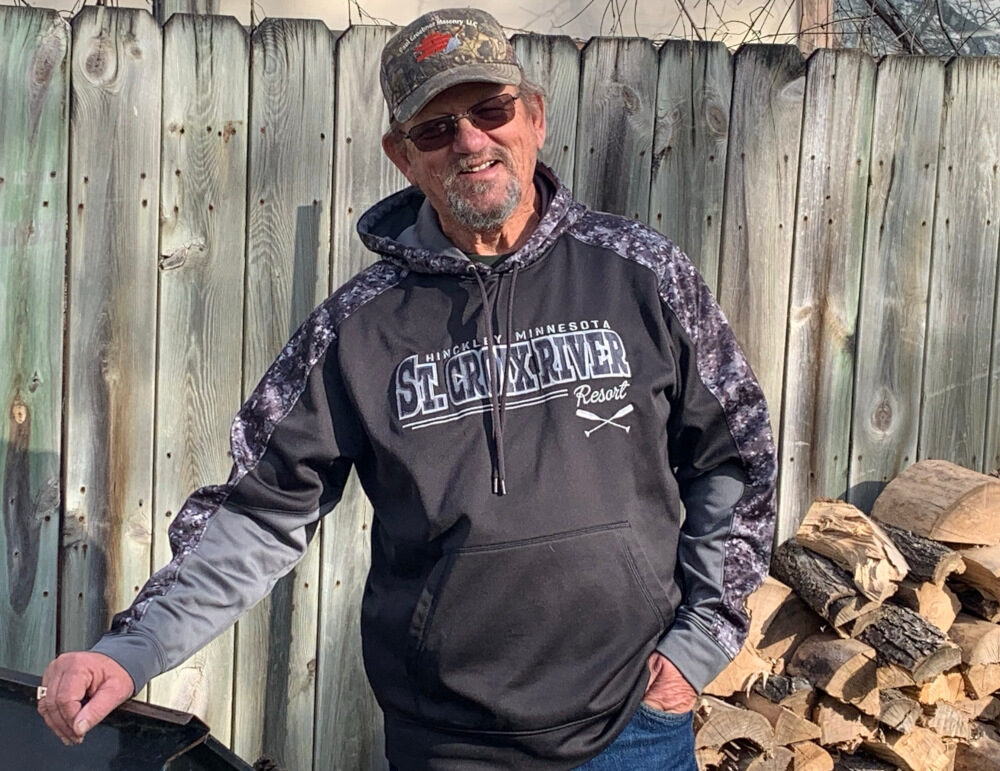
November 22, 2021

About eight years ago, Roger Albrecht, 68, of Mankato was diagnosed with type 2 diabetes. Working with his family physician, Roger was keeping his blood sugar levels stable. As a semi-retired truck driver, Roger’s safety and livelihood depend on keeping his blood sugar in check.
Then in 2020, Roger’s HbA1C test showed that his blood suger had jumped to 12%, which is extremely high. When blood sugar is highly elevated, people may experience a variety of symptoms such as increased thirst, frequent urination, general fatigue and blurred vision.
“I thought I was getting old and lazy, but no, it was my diabetes acting up.” Roger said.
An HbA1C test is a simple blood test that measures your average blood sugar level over the previous 2-3 months. An HbA1c of 7.0% is equivalent to an estimated average blood sugar of 154 mg/dL. The higher the level, the greater the risk for developing diabetes complications such as kidney failure, stroke, nerve damage, blindness and heart attack.
Dr. Andrew Miller, his family physician, sent Roger to the Mankato Clinic Diabetes Care Center. The center offers complete diabetes care from a team of specialists – an endocrinologist, registered nurse, diabetes educator and clinical pharmacist. With care and support from the diabetes team and his family physician, Roger has gotten his HbA1C down to 7.9% and is working toward a goal of less than 7.0%.
With his diabetes under better control, Roger wakes up, ready to get things done. “I feel so much more alive in the morning when I get up. It’s made a world of difference in how I feel.”
Managing type 2 diabetes
Type 2 diabetes, the most common type of diabetes, happens when blood sugar, also called glucose, is too high. Blood glucose, the body’s main source of energy, comes from the food you eat. The pancreas makes insulin to move glucose into the cells for energy. With type 2 diabetes, the body doesn’t make enough insulin or doesn’t use insulin well. Too much glucose stays in the blood and never reaches the cells.
For Roger, high blood sugar is the enemy that can damage the body in the long term. Managing type 2 diabetes usually takes a combination of eating for better health, a fitness plan, blood glucose monitoring and medications.
The first step was talking with Ashley Forstner, RN, and a visit with the endocrinologist to get his blood sugar under better control. The physician prescribed a continuous glucose monitor and Ashley helped Roger get started. He wears a small sensor that continuously measures his glucose levels and sends the data to his smartphone.

The first step was talking with Ashley Forstner, RN, and a visit with Dr. Abel Alfonso, endocrinologist, to get his blood sugar under better control. Dr. Alfonso prescribed a continuous glucose monitor and Ashley helped Roger get started. He wears a small sensor that continuously measures his glucose levels and sends the data to his smartphone.
“I can look at my phone and see, oh, I’m getting a little high, I better take it easy. Or I’m a little low, I better have some orange juice and bring it up a little,” Roger said. “It’s just amazing. With education and help, what a person can do with that.”
Whenever Roger has questions or issues with his monitor, a quick call to Ashley gets him back on track.
The dietitian helped Roger understand that his sugar level is not tied to just watching his sugar.
“You gotta watch your carbs. After I started doing that, I knew what was up and what was going on. It got so easy,” Roger said.
When he has a hamburger, he skips the bun. If he has chips, he eats 10-15 chips – just enough to satisfy. He has learned it’s all about portions. Roger also started eating breakfast instead of skipping this meal. He has an egg and a piece of toast which usually holds him into late afternoon. Then he has a snack like a small ham sandwich. He doesn’t eat much for lunch and enjoys a bigger supper. This works for him.

Nate Evers, Pharm-D, is a clinical pharmacist, who helped Roger adjust his medications for optimal effectiveness.
“My goal is to help remove any obstacle between patients, their medications and their healthcare goals. When deciding on drug therapy, we try to take into consideration affordability, drug interactions, other conditions and overall complexity,” Nate said. “Whether that is helping a patient sign up for manufacturer assistance programs, helping to reduce the number of daily pills or injections, or providing education about medications, there is often something that can be done to optimize medication therapy.”
Roger is on a combination of diabetes medications and insulin. Roger’s new routine is simple, effective and affordable.
“With everyone working together, they really take care of doing what they can do to keep prices down. I’m the type of person where if it costs $300 a month then no I won’t take it. They work steadily to find something else that will work. Some discount to make it affordable. That’s just been fantastic,” Roger said.
Along the way, his diabetes care team adjusts Roger’s treatment plan as needed.
Feeling good
Roger drives truck for about three months during the harvest season. Every year, he renews his commercial driver’s license which requires an annual physical and a medical certificate to show he’s in good health.
In the summer, he works a couple days a week for the county Hazardous Waste Facility. Every day, he takes a little walk in the neighborhood. To stay active, he mows the lawn, works in the yard and enjoys doing housework – even the dishes. He’s also busy in the garage. He’s working on a vintage car, a 1941 Chevy Master Deluxe. He spends most of his day on his feet. He sits down for short 10 minute breaks and then he’s up and going again.
“I have told more people about the diabetes care center. When someone tells me they can’t keep their A1C steady, I say go up to the diabetes center, they will help you. It’s been wonderful,” Roger said.
Learn more about the Mankato Clinic Diabetes Care Center.
